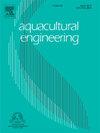Energy analysis in fish aquaculture: Cumulative energy demand of different farming systems
IF 3.6
2区 农林科学
Q2 AGRICULTURAL ENGINEERING
引用次数: 0
Abstract
Energy consumption is one of the critical challenges for the continued growth of the aquaculture sector. In addition to the substantial feed consumption common to all types of systems, the high direct energy demand is driven by electricity use for water extraction, pumping, and aeration in land-based farms, and by fuel consumption in coastal farms. The aim of this study is to analyse the Cumulative Energy Demand (CED) of the production of European Sea Bass and Gilthead Sea Bream across different farming systems in the Mediterranean area. By focusing on both land-based and coastal sea-cage systems, an energy analysis of four different farms was conducted using a “from cradle to gate” life cycle approach. The functional unit for this study was set at 1 tonne of fish. The results show that land-based farms have a higher CED (168,535 and 188,642 MJ/t) due to both feed consumption (32 and 39 % of the total) and the use of liquid oxygen (46 and 16 % of the total) and direct electricity (20 and 43 % of the total, with on-site electricity consumption of 34,167.6 and 14,086.8 MJ/t). The lower CED of coastal farms (66,224 and 76,507 MJ/t) is largely due to feed usage (around 90 % of the total) and low fuel intensity (67.6 and 82.9 l/t, corresponding to 2495 and 3057 MJ/t, respectively). A scenario analysis was conducted using the 2030 projected national electricity mix of the Integrated National Energy and Climate Plan for land-based farms. Additionally, the impact of substituting diesel with biofuel in coastal farms was evaluated. The results indicate that these changes could reduce the use of non-renewable sources by at least 5 %.
鱼类养殖中的能量分析:不同养殖系统的累积能量需求
能源消耗是水产养殖部门持续增长的关键挑战之一。除了所有类型的系统都有大量的饲料消耗外,陆地养殖场的取水、抽水和曝气用电以及沿海养殖场的燃料消耗也推动了直接能源的高需求。本研究的目的是分析地中海地区不同养殖系统生产欧洲鲈鱼和金头鲷鱼的累积能源需求(CED)。通过关注陆基和沿海海笼系统,采用“从摇篮到闸门”的生命周期方法对四个不同的养殖场进行了能量分析。本研究的功能单位设定为1吨鱼。结果表明,由于饲料消耗(占总量的32%和39% %)、液氧消耗(占总量的46%和16% %)和直接电消耗(占总量的20%和43% %,其中现场用电量分别为34167.6和14086.8 MJ/t),陆地养殖场的CED(168,535和188,642 MJ/t)较高。沿海养殖场的低CED(66,224和76,507 MJ/t)主要是由于饲料使用量(约占总量的90% %)和低燃料强度(67.6和82.9 l/t,分别对应2495和3057 MJ/t)。利用《国家能源和气候综合计划》对陆地农场的2030年预计全国电力结构进行了情景分析。此外,用生物燃料替代柴油对沿海农场的影响也进行了评估。结果表明,这些变化可以减少不可再生能源的使用至少5% %。
本文章由计算机程序翻译,如有差异,请以英文原文为准。
求助全文
约1分钟内获得全文
求助全文
来源期刊

Aquacultural Engineering
农林科学-农业工程
CiteScore
8.60
自引率
10.00%
发文量
63
审稿时长
>24 weeks
期刊介绍:
Aquacultural Engineering is concerned with the design and development of effective aquacultural systems for marine and freshwater facilities. The journal aims to apply the knowledge gained from basic research which potentially can be translated into commercial operations.
Problems of scale-up and application of research data involve many parameters, both physical and biological, making it difficult to anticipate the interaction between the unit processes and the cultured animals. Aquacultural Engineering aims to develop this bioengineering interface for aquaculture and welcomes contributions in the following areas:
– Engineering and design of aquaculture facilities
– Engineering-based research studies
– Construction experience and techniques
– In-service experience, commissioning, operation
– Materials selection and their uses
– Quantification of biological data and constraints
 求助内容:
求助内容: 应助结果提醒方式:
应助结果提醒方式:


